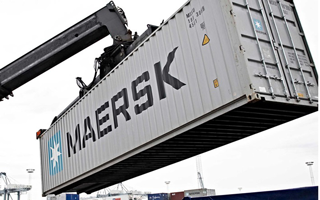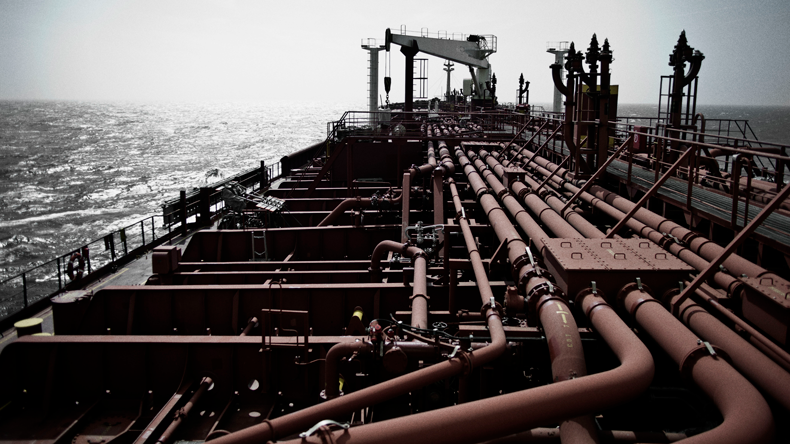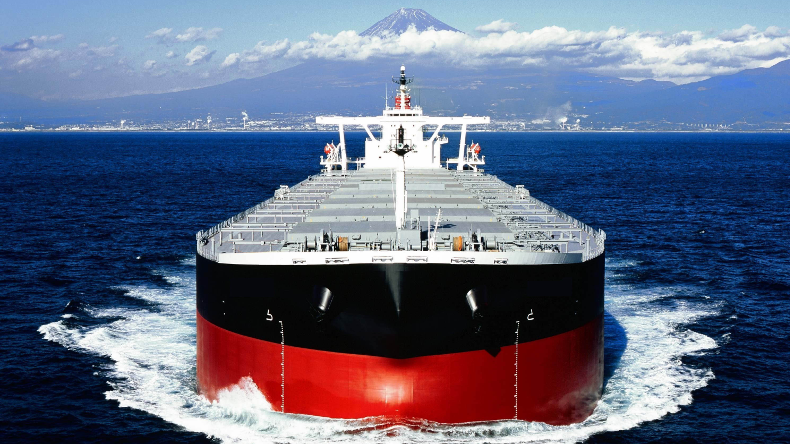Weekly briefing: Freight rates warning; oil industry demand optimism
China moves to block Australian coal imports, while the IMO urged to look beyond LNG on decarbonisation path
Better than expected volumes and freight rates helped deliver a strong third quarter of the year for Maersk and other container carriers, although Hapag-Lloyd chief executive Rolf Habben Jansen has warned that rates are unlikely to remain at their current levels for long. Meanwhile, oil demand is expected to be supported in the medium term unless decarbonisation measures are accelerated
THIS weekly briefing provides sector-by-sector coverage of the biggest news and analysis in shipping.
Follow the links within the text to the relevant news items in each market segment.
Containers
Maersk raised its full-year guidance this week, foreshadowing what many have long thought: the container shipping sector is having a strong third quarter of the year.
That may not offer much solace to the 2,000 staff it has said it will make redundant as part of its restructuring of its Ocean and Logistics division, but it is a smaller cut than the carrier has made during previous crises.
Maersk based its improve outlook on higher than expected volumes and better freight rates. Volumes have surged since the dark days of April and May, as consumers have switched from spending on services to spending on goods. Unlike services, goods can be containerised.
That change in behaviour is being witnessed at US ports, which have continued to see increased throughput, particularly for inward-bound goods.
But the lack of exports on the backhaul is starting to show in equipment shortages in exporting nations such as China, where shortages are forcing carriers to shorten the length of time the will release a container to customers before the voyage date. Prices for shipper-owned equipment are also surging, putting additional pressure on the lines’ customers, who are already paying record high rates for carriage.
Those rates have remained strong through Golden Week, the traditional end of the peak season. The demand slump that coincides often prompts significant rate erosion in the spot market, before picking up in the latter stages of the year. But with reports of continued strength in volumes and positive market sentiment abound, rates initially appear to be holding firm.
How long this lasts remains to be seen, however. Hapag-Lloyd chief executive Rolf Habben Jansen warned that freight rates were unlikely to remain at their current stratospheric levels for long, despite continued strong demand.
“This is just a spike that no one foresaw in an unusual period,” he said. “There will be a correction to that.”
Maersk chief executive Søren Skou was also uncertain over the outlook for what comes after this year, warning that the end of government fiscal stimulus packages, and additional lockdowns, could constrain demand in 2021.
Tankers
Global oil demand may not plateau until the 2030s if new decarbonisation policies are not adopted, according to the International Energy Agency.
It also forecasts global investments in the shipping of oil and gas over the next 20 years could reach almost $400bn, depending on the pace of economic recovery and decarbonisation progress.
Global energy demand is set to drop by 5% in 2020, while energy-related CO2 emissions will fall by 7% and energy investment by 18%, the IEA said in its 2020 World Energy Outlook.
The IEA report supports the conclusions of the latest World Oil Outlook 2045 from the Organisation of the Petroleum Exporting Countries, which also predicts that shipping’s drive to decarbonisation is unlikely to come at the expense of fossil fuels or lead to a steep fall in fuel oil consumption.
Demand for marine bunkers — now at 4m barrels per day — will rise a further 400,000 bpd by 2025, and stabilise at 4.6m bpd–4.7m bpd in the next 25 years, Opec said.
The projected growth is seen despite decarbonisation objectives and signals that the oil cartel is downplaying the role of future fuels, such as hydrogen and ammonia, alongside traditional fuel oils.
Opec said liquefied natural gas was “one obvious alternative” for shipping fuels, although the shortage of bunkering services remained an obstacle to its widespread adoption.
The International Maritime Organization was also urged last week to adopt a decarbonisation path that quickly phases out the use of LNG as a marine fuel and establish carbon pricing, rather than waste time on marginal abatement measures.
A Global Maritime Forum virtual meeting heard views from climate change leaders as well as oil company Royal Dutch Shell on paths to decarbonisation for shipping.
The IMO needs to avoid wasting money by going down a dead-end or succumbing to traps such as LNG, according to Fred Krupp, president of the Environmental Defense Fund.
“When you look at the life cycle analysis, including the methane emissions upstream, from the production and transport of gas from liquefying the product, it is just not an answer,” he said. “It would be actually a backwards step and investments in that LNG would mean stranded assets.”
However, Royal Dutch Shell, the first oil company to establish net-zero emission targets by 2050, defended its support of LNG as a bridging fuel, adding that it is proposing so-called niche markets for alternative fuels to trial where technologies can be trialled and scaled.
Meanwhile, Asahi Tanker has placed orders at two Japanese yards for the zero-emission, electric-powered bunker tankers, which it has committed to build under the e5 Consortium.
The company said the lithium-ion battery powered vessels will be built at Koa Sangyou and Imura Zonsen shipyards and delivered by March 2022 and March 2023. Kawasaki Heavy Industries has been appointed the project’s systems integrator.
The two tankers will adopt the e5 tanker design developed by e5 Lab. They are due to go into service as bunker vessels in Tokyo Bay.
The IEA warned the world is not on track for global sustainable economic recovery and with the exception of the EU, the UK and a few other countries, governments do not have the necessary plans in place.
Dry bulk
China has apparently made moves to block Australian coal imports, which would hit capesizes and panamaxes the hardest. Whether politically motivated or not, relations between the two countries have been fraying, with the latest unofficial ban causing concern among dry bulk participants. Capesizes fell to $25,497 per day on October 13 compared with a 13-month high of $34,896 on October 6.
Limited coal exports from Colombia are also denting demand prospects for the larger bulkers, according to Braemar. Mines had been closed earlier in the year due to coronavirus-related restrictions, but more recently strikes at Cerrejon, a venture between Glencore, BHP and Anglo American, over worker rights were said to have hampered operations.
Brazilian mining giant Vale meanwhile joined a project which aims to invest more than $600m in constructing a new iron ore terminal at Ningbo-Zhoushan, China. The project will ramp up handling and distribution capacity of iron ore at the port, as China looks to diversify its import sources by purchasing more of the bulk material from Brazil.
In other news, seven crew members aboard the Mitsui OSK Lines capesize Vega Dream tested positive for coronavirus upon arrival at Port Hedland in Australia, after boarding in the Philippines with a negative result. This is the second case of infection in about two weeks after 17 crew on the Patricia Oldendorff also tested positive in the northwestern Australian port after a crew change in Manila.
The cases prompted InterManager to call for tweaks to the industry-wide protocols for crew change, demanding that seafarers be quarantined for 14 days prior to being tested, rather than the five days being undertaken in some areas.
In corporate news, Greece-based Globus Maritime bought a kamsarmax, its first addition in several years, for $18.4m, after a series of fundraisers. The 2015-built vessel is believed to have been purchased from Scorpio Bulkers, which offloaded its third bulker in about two weeks.
Finally, Italian firm Giuseppe Bottiglieri Shipping has seen in new management from consultancy Alvarez & Marsal. Alessandro Ranzoli was appointed chief executive, while Adriano Bianchi becomes non-executive chairman.
It is widely believed that the appointments replace family members Giuseppe and Mariella, who are fifth and sixth generation, respectively. The company was founded by Capt Giovanni Bottiglieri in 1850 but was taken over by private equity firm Bain Capital in 2018.



